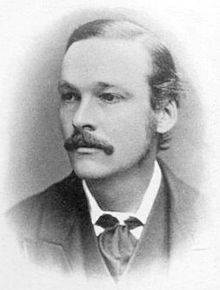Francis Maitland Balfour
| Francis Maitland Balfour | |
|---|---|
 |
|
| Born |
10 November 1851 Edinburgh |
| Died | 19 July 1882 (aged 30) Chamonix |
| Nationality | British |
| Fields | embryology |
| Institutions | Trinity College, Cambridge |
| Notable awards | Royal Medal (1881) |
Francis (Frank) Maitland Balfour, known as F. M. Balfour, (10 November 1851 – 19 July 1882) was a British biologist. He lost his life while attempting the ascent of Mont Blanc. He was regarded by his colleagues as one of the greatest biologists of his day and Charles Darwin's successor.
The younger brother of the politician, Arthur Balfour, he was born at Edinburgh in Scotland. He attended Harrow School, where he showed no outstanding ability. However, one of the masters, George Griffith, encouraged and aided him in the pursuit of natural science, a taste for which, especially geology, he had acquired from his mother. Entering Trinity College, Cambridge, in 1870, he was elected a natural science scholar of his college in the following year, and obtained second place in the Natural Science Tripos of December 1873.
A course of lectures on embryology, delivered by Sir Michael Foster in 1871, turned Balfour's attention to animal morphology. After the tripos, he was selected to occupy one of the two seats allocated to the University of Cambridge at the Naples zoological station. The research work which he began there contributed in an important degree to his election as a Fellow of Trinity in 1874; and also gave him the material for a series of papers (published as a monograph in 1878) on the Elasmobranch fish, which threw new light on the development of several organs in the Vertebrates, in particular of the uro-genital and nervous systems.
His next work was a large treatise, Comparative Embryology, in two volumes; the first, published in 1880, dealing with the Invertebrates, and the second (1881) with the Vertebrates. This book displayed a vigorous scientific imagination, controlled by a logical sense that rigidly distinguished between fact and hypothesis, and it quickly won wide recognition, both as an admirable digest of the numberless observations made with regard to the development of animals during the quarter of a century preceding its publication, and as a work of original research.
...
Wikipedia
